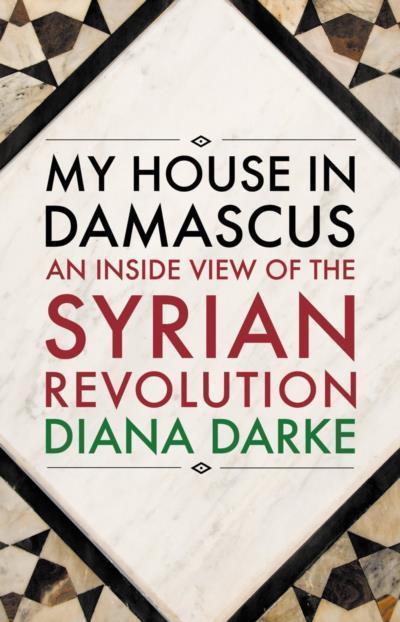A home in Damascus
William Armstrong - william.armstrong@hdn.com.tr

A picture taken on Sept 7, 2015 shows a general view of damaged buildings in the rebel-held area of Douma, east of the Syrian capital Damascus as a sandstorm blows over the city. AFP photo
‘My House in Damascus: An Inside View of the Syrian Revolution’ by Diana Darke (Haus, 282 pages, £10)Back in early 2005, British travel writer and journalist Diana Darke bought a 17th century courtyard house in the old town of Damascus. After decades writing on Syria and the region (including the Brandt tourist guide to eastern Turkey), Darke used her life savings to buy and restore the property. She had no commercial motives, simply seeing it as a personal project to save one of many derelict, neglected homes in a UNESCO World Heritage Site.
 She later used the house as a doorway to write a book on her experiences in Syria since first visiting in 1978. But her timing could not have been worse. Civil protests against the Bashar al-Assad regime had begun in Damascus in March 2011, and soon the conflagration engulfing the Middle East after the Arab Spring would be setting Syria alight too. Darke was forced to repeatedly redraft the book in light of the catastrophe unfolding in the country and the grave situation of her Damascus home. After she fled Syria, her house became a shelter for dozens of refugees displaced by the violence in the suburbs.
She later used the house as a doorway to write a book on her experiences in Syria since first visiting in 1978. But her timing could not have been worse. Civil protests against the Bashar al-Assad regime had begun in Damascus in March 2011, and soon the conflagration engulfing the Middle East after the Arab Spring would be setting Syria alight too. Darke was forced to repeatedly redraft the book in light of the catastrophe unfolding in the country and the grave situation of her Damascus home. After she fled Syria, her house became a shelter for dozens of refugees displaced by the violence in the suburbs.“My House in Damascus” was written in traumatic circumstances, but it is a marvelous book - surely among the best and most sensitive of the hundreds published on Syria since war erupted. In the preface, Darke writes that she aimed to tell the story of “the details that never reach the press ... the story of Syria, its people, its society and secrets, told through the prism of an ancient building: my house.” That mission statement may flirt with cliché, but the book is a triumph.
Its pages brim with local characters and colors. Darke struggled with endemic corruption and bribe-giving, which she describes as being among the crippling daily annoyances that accumulated frustrations leading to the first anti-Assad protests. But the happier textures of Syria’s rich and complex society also shine through. There are splendid portraits of Rashid the lawyer, Marwan the shopkeeper, Maryam the bank manager, and Abu Ashraf the caretaker. Darke presents them as human beings above all else - not merely as sectarian surrogates. Apart from in exceptional circumstances, she rarely even refers to their religious affiliation. This contrasts with so much other coverage of the chaos in Syria, where ordinary people are framed as little more than pawns on a sectarian chessboard.
Darke’s judgement on the war is also sound. With the “moderate alternative” always too weak and let down by the failure of the international community, she says 75 percent of Syrians have become stuck in the middle between two extremes. “Millions of people [have been] deprived of a voice, silenced by fear, fear of the consequences of speaking out, fear of the system that was supposed to be protecting them.” To illustrate, she uses the great medieval Muslim philosopher al-Ghazali’s story about the donkey caught between two carrots. The donkey agonizes over which carrot might be juicier or bigger for so long that it ends up dying of starvation in the middle. The moral of the tale is to show how indecision is a form of decision and its consequences potentially deadly. In today’s Syria, Darke writes, “the two carrots have been getting further and further apart, making it harder and harder for the silent majority to decide.”
As the war spread and the fabric of society collapsed, her home in Damascus became a “mirror to the tragic anarchy of Syria.” Once she became unable to continue living there, the house and its courtyard became a sanctuary for friends and acquaintances left behind but displaced from their own homes. Over time, the various families sheltering there have clashed and - perhaps unsurprisingly - Darke ended up being defrauded. At one point, the future of her house looked as bleak as the future of the country itself. She suggests that it became “a microcosm of the discord that is mirrored in every shared house across Syria, where different families are forced together by the circumstances of war.”
How different from her feelings on first moving into the house, when “every inch of the place was a discovery ... Everything was rich with promise.” Amid the carnage in Syria, this is not just a wonderful book - it is also a deeply sad one.
* 15 percent of proceeds of all sales of the book are donated to a special fund for Syrian Higher Education administered by the Said Foundation.










